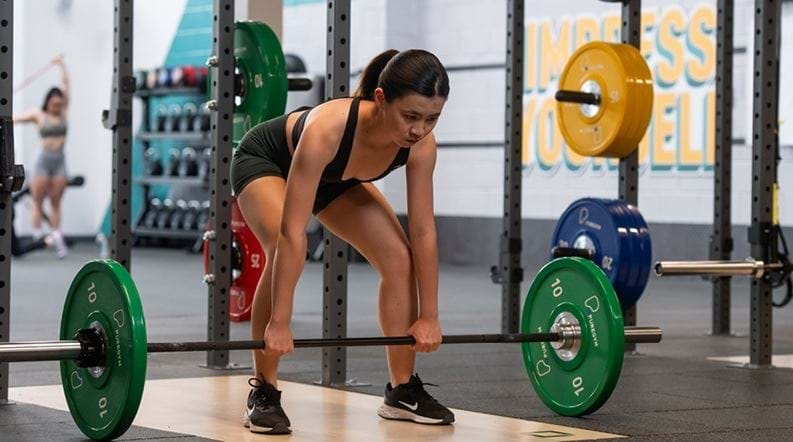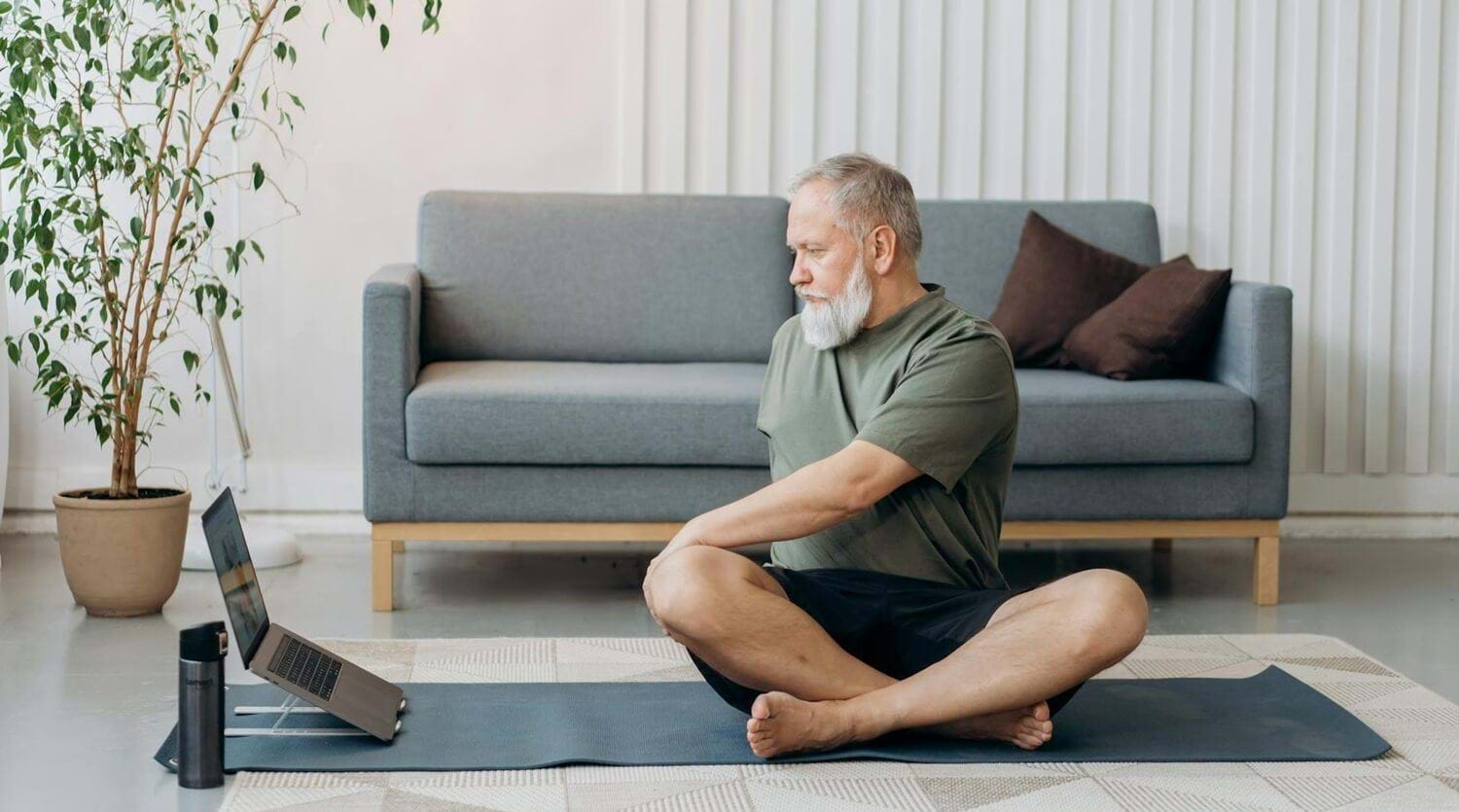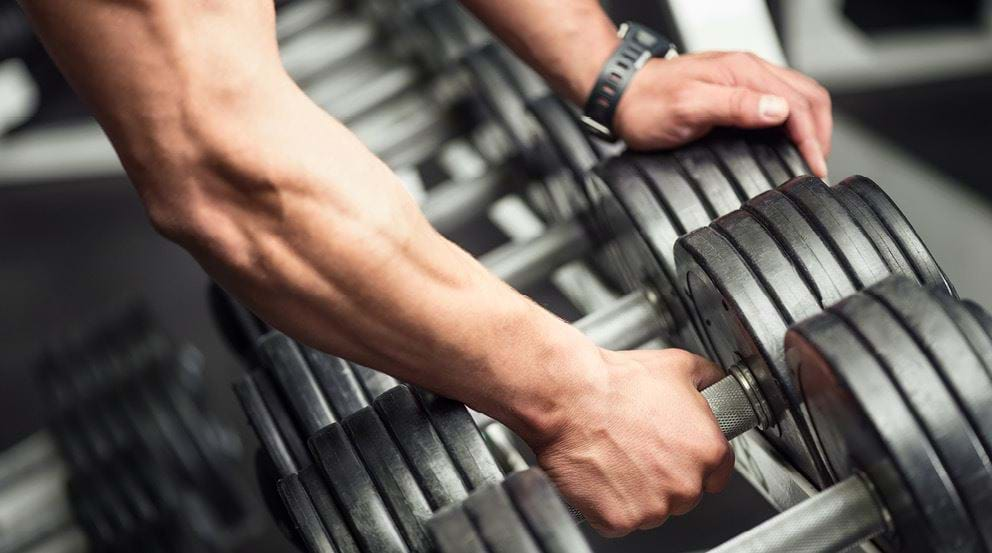How to Master Hip Hinge Movements

What Is Hip Hinging | Benefits | Muscles Worked | How To Do | Common Mistakes | Improving Hip Mobility | When To Train | Beginner Hinge Workout | Advanced Hinge Workout
The hip hinge is a key movement pattern that is used in both the gym and everyday life. Mastering this movement will help you to build lower body strength and power while reducing your risk of injury, in the gym and out.
Read on to learn all about hip hinge exercises, how to do them correctly, and why they are so important.
What Is Hip Hinging?
The hip hinge workout move is a movement pattern that involves bending forward from the hips while keeping the spine in a neutral position. It’s used in many everyday activities, from picking things up off the floor to sitting down on a chair, as well as in exercises in the gym, and in many sports.
While this is a natural movement, people often get it wrong and, rather than bending from the hips, bend from the spine. This is often due to tight hips caused by a sedentary lifestyle, which makes hip hinging difficult. Bending from the spine puts the pressure and weight onto the small spinal erector muscles, rather than the large muscles in the hips and legs, putting you at risk of back pain and injuries.
Benefits Of Training The Hip Hinge
Learning how to correctly perform hip hinge workout movements has several benefits, including:
Reduced risk of back injury. Learning how to correctly hip hinge reduces the chance of hurting your back by reducing unnecessary load on the muscles and discs in the spine.
Correct muscle engagement. Mastering hip hinging workouts ensures the correct muscles are used when performing hip hinge exercises, so you get the results that you want.
Increased strength and power. Correct hip hinge technique recruits and strengthens the glutes and hamstrings, leading to more lower body power and strength. A stronger hip hinge will help with squats, deadlifts, jumps, and more.
Better sports performance. The hip hinge movement is used in almost all sports movements such as running to jumping, and strengthening this movement leads to better overall performance.
Improved posture. Hip hinge exercises strengthen the glutes and can help combat poor posture caused by sitting all day.
Muscles Worked In Hip Hinge Exercises
The hip hinge is a posterior chain exercise. When performed correctly, the glutes and hamstrings are the primary muscles worked, with the erector spinae and abdominals also engaged.
How To Do Hinge Workout Movements
Whether you’re doing simple bodyweight hip hinge exercises or advanced lifts, the hip hinge technique is the same:
Stand tall with weight placed in the heels of your feet, knees slightly bent.
Brace your core by tensing your abdominals, as if you were protecting yourself from being hit in the stomach.
Send your hips back while keeping your spine neutral and chest open. Your knees will bend and torso will come forward as a result.
To come up, push your hips forward while straightening the knees, keeping the spine neutral throughout.
Common Hip Hinge Mistakes
Common mistakes when doing hip hinge workouts include:
Rounding the back. Rounding the spine is a common hip hinge issue, typically caused by poor mobility and weak glutes. Practice hip hinging with just bodyweight until you are able to engage the glutes and hamstrings correctly and keep the back neutral. You can place a stick or rod on your back to help prevent rounding.
Overextending the back. Some people over arch their back rather than hinging at the hips. Focus on keeping the core engaged and back neutral while pushing the hips back.
Bending the knees too much. The shins should stay at a 90 degree angle to the floor throughout the entire hip hinge. Bending the knees too much turns hip hinging into more of a squat movement.
Going too low. Going too low when hip hinging causes the back to round. Stop when you feel the stretch in your hamstrings, or once you lose correct form. You may find your range limited depending on your mobility but as this improves, so will your depth.
Improving Hip Hinge Mobility
Poor mobility and flexibility can limit your ability to hip hinge. There can be many factors but tight hamstrings and tight, weak glutes are a common cause. Try the following to improve your hip hinge:
Hamstring stretches: add a range of hamstring stretches into your daily routine, as well as before and after your workouts, such as downward dog, kneeling hamstring stretch, and forward folds. Hold each stretch for at least 30 seconds.
Glute strengthening exercises: strong glutes are essential for a good hip hinge. Glute bridges and hip thrusts can be added to your workouts or performed each day to improve your glute strength.
Hip stretches: work on improving your hip mobility with daily stretches such as deep squats, pigeon pose, and Cossack squats.
Regular movement: sitting down for long periods of time can quickly lead to stiff hips. Try to get up every 30 minutes to walk around and stretch.
When To Train Hip Hinge Movements
Wonder what the best hinge workouts are to perfect your hip hinge? It’s easy to incorporate this movement pattern into your existing schedule.
In your daily movement
A great place to start is by practicing good hip hinge technique in your everyday activities, such as picking something up from the floor or loading the dishwasher. Stop, brace your core, and lead with your hips rather than bending at the spine every time you need to bend down.
As part of your warm ups
Light and bodyweight hip hinge exercises are great for warming up the posterior chain and activating the glutes ahead of your workouts.
To build lower body strength
Moderate to heavy hip hinge exercises are a great lower body exercise to include in your strength training workouts.
Hip Hinges Workout For Beginners
New to working on your hip hinge? Here are some exercises to get started with.
Bodyweight hip hinge: work on mastering the hip hinge without any weight first.
Resistance band deadlifts: this involves holding a long resistance band that is looped around both feet. The resistance band creates resistance while keeping the centre of gravity midfoot, making it easier to keep good form than when using free weights.
Bodyweight glute bridge: the glute bridge limits how much the back can flex or arch, making it easier to practice hip hinging with a neutral spine.
Kettlebell deadlift: as you get stronger, you can progress to holding a single kettlebell during a kettlebell. This keeps the weight front and centre which can help with technique.
Bodyweight B stance deadlift: this unilateral exercise strengthens hip hinging while improving balance and stability.
Advanced Hinge Day Workout
As you get stronger, you can progress to more technical and advanced exercises. These are some of the best hinge workouts for intermediate to advanced lifters, and can be done with dumbbells or barbells depending on how much weight you want to move.
Conventional deadlifts: this exercise is great for loading the glutes and strengthening the posterior chain.
Good mornings: the good morning exercise engages the lower back more than deadlifts, making it a great hip hinge movement that strengthens the spinal erectors as well as the glutes and hamstrings.
Hip thrusts: hip thrusts strengthen the glutes in a bigger range of motion than glute bridges and allow more more weight to be added.
Romanian deadlifts: Romanian deadlifts put more focus on the descent of the weight, allowing a more controlled hinge than a conventional deadlift.
Kettlebell swings: kettlebell swings are a dynamic, explosive hip hinge exercise that builds strength and power.
You can find more deadlift variations here, along with tips and demonstrations, for more hip hinging workout ideas.
Ready to work on your hip hinge? Find your nearest gym here to get started.


